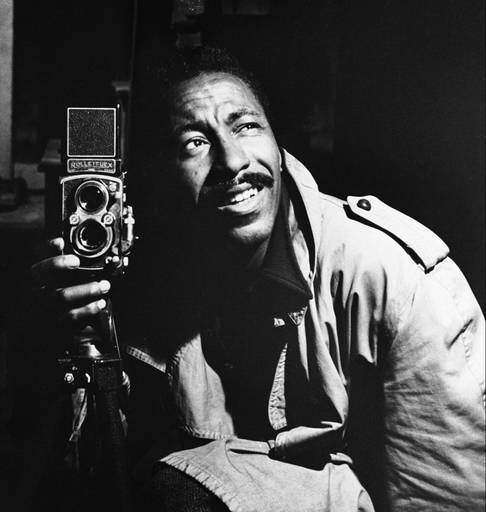Last Updated on August 1, 2021
Photographer Profile: Gordon Parks (1912 – 2006)

Self Portrait, ca.1948
**Images courtesy of The Gordon Parks Foundation
Gordon Parks was one of the most influential photographers of the 20th Century. As a photographer, Park’s photographic work ranged from photojournalism to fashion photography.
Parks photographed subjects that had a profound effect on the national perception of social issues and the truth of American life for those who often were overlooked.
Gordon Parks stands as one of several photographers whose work can be looked at as a means of understanding the power of the camera; what it can reveal, how it can be leveraged for social change, and how art and commercial success can stand alongside social activism.
Gordon Parks personal and professional journey is of interest to more people than photographers. A profile of photographer Gordon Parks is of interest to anyone who takes an interest in the world and their fellow travellers in it.

Photographer Gordon Parks
Early Life and Career
Page Contents
Gordon Parks was born in Fort Scott, Kansas in 1912. Parks experienced firsthand the effects of segregation and racism. At the age of 25 Parks first came across photographs taken by members of the Farm Security Administration.
Inspired, Parks bought a camera and began making photographs whenever possible. At the urging of those who saw some of his work, Parks sought professional employment as a photographer.
Park’s first job as a photographer was for a women’s clothing store, which would be a foreshadowing of his future work in fashion.
Eventually moving to Chicago, Parks would establish a successful portrait photography business while also documenting the experiences of African-Americans with dignity and respect.
Park’s work quickly gained notice leading to the recognition that would lead to his being asked to join the same Farmers Security Administration that had inspired him years before.

Photographer Gordon Parks
You may be interested in the following related articles as well.
Photojournalism
Parks had been impressed with the photography of the Farm Security Administration, an agency tasked with documenting and dealing with poverty in America during the New Deal era.
The focus of the FSA’s photography program on social ills captured as well by photographers of note such as Walker Evans and Dorothea Lange.
When asked to join the FSA himself in 1941 Parks brought with him his unique vision and personal experiences. Parks would continue his work with the FSA, and subsequently when it was transformed into the Office of War Information.
During his time with the FSA Parks focused his work on issues relating to race and poverty. The effectiveness of his work was evident in the inspiration it made in people to effect real change.
Notable photojournalism images created by Parks are Emerging Man (1952) and American Gothic (1942), as well as his photo essay about the life of Flavio da Silva which appeared in LIFE magazine in 1961.

Photographer Gordon Parks
Fashion Photography
Parks would become a photographer for Vogue magazine in 1944 while continuing to advocate for and document social issues. During this time it would be the conception and completion of several of his projects dealing with social issues that led to his becoming a photographer for LIFE magazine.
Parks would spend several years at LIFE, becoming one of the most recognized photographers of the time. His work foreshadowed the Civil Rights Movement, and he would later photograph icons of the movement such as Dr Martin Luther King Jr. and Malcolm X.

Muhammad Ali Trains in Hyde Park, London, England, 1966
Legacy
Gordon Parks left a lasting legacy not only on photography but the fabric of American history. Gordon Parks, through his photography, had an influence on entire generations of fashion and photojournalism photographers.
As an advocate for racial and social equality his photographs remain as a testament to the past and an inspiration for a better future.
After the death of Parks in 2006, the Gordon Parks Foundation was formed. The foundation acts as a collection of Park’s works as well as an advocate for social change.
Like many of the most influential photographers of the 20th Century Gordon Parks remains a photographer that aspiring photographers should be familiar with.
Thank you for sharing with us, I believe this website truly stands out : D.